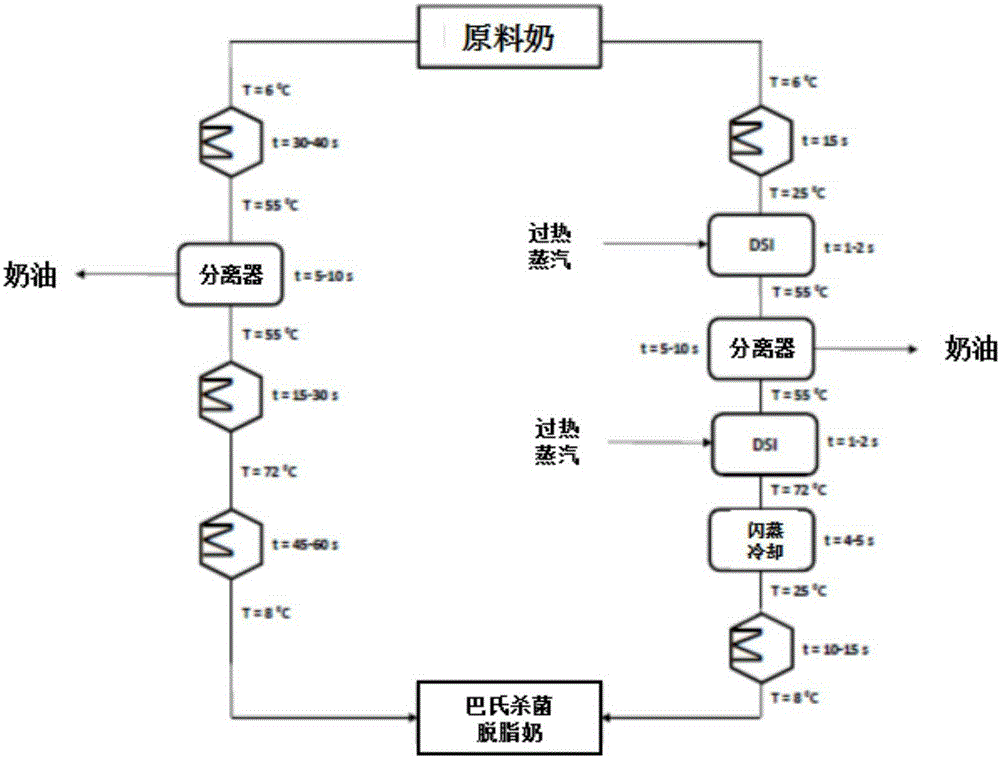Process For Production Of Low Microbial Count Milk Products
A product and bacteria technology, applied in the preservation and application of dairy products and milk, can solve the problems of insufficient reduction of bacteria count and blockage.
- Summary
- Abstract
- Description
- Claims
- Application Information
AI Technical Summary
Problems solved by technology
Method used
Image
Examples
Embodiment 1
[0043] Production of pasteurized skim milk
[0044] The raw milk was cooled to 6°C and heated to 25°C within 15 seconds by means of a plate heat exchanger. The preheated milk is heated to 55° C. within 1 second by a first hot steam jet and then directed to a separator where the cream is separated. The skimmed milk was heated to 72°C in 2 seconds and pasteurized by a second direct injection of hot steam. The pasteurized milk was then sprayed into the reactor in a turbulent flow and the pressure therein was reduced allowing the product to cool to 25°C within 5 seconds. The resulting product was subsequently cooled to 8° C. in a plate heat exchanger. The resulting skim milk is practically free of thermophilic and mesophilic spores.
PUM
 Login to View More
Login to View More Abstract
Description
Claims
Application Information
 Login to View More
Login to View More - R&D
- Intellectual Property
- Life Sciences
- Materials
- Tech Scout
- Unparalleled Data Quality
- Higher Quality Content
- 60% Fewer Hallucinations
Browse by: Latest US Patents, China's latest patents, Technical Efficacy Thesaurus, Application Domain, Technology Topic, Popular Technical Reports.
© 2025 PatSnap. All rights reserved.Legal|Privacy policy|Modern Slavery Act Transparency Statement|Sitemap|About US| Contact US: help@patsnap.com


